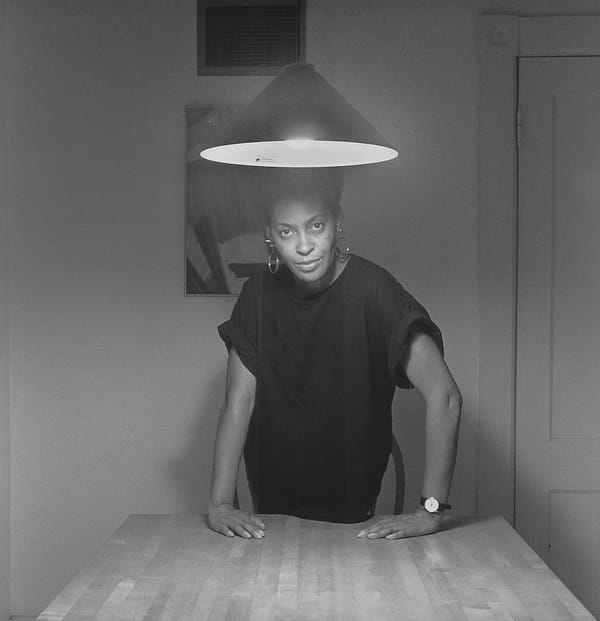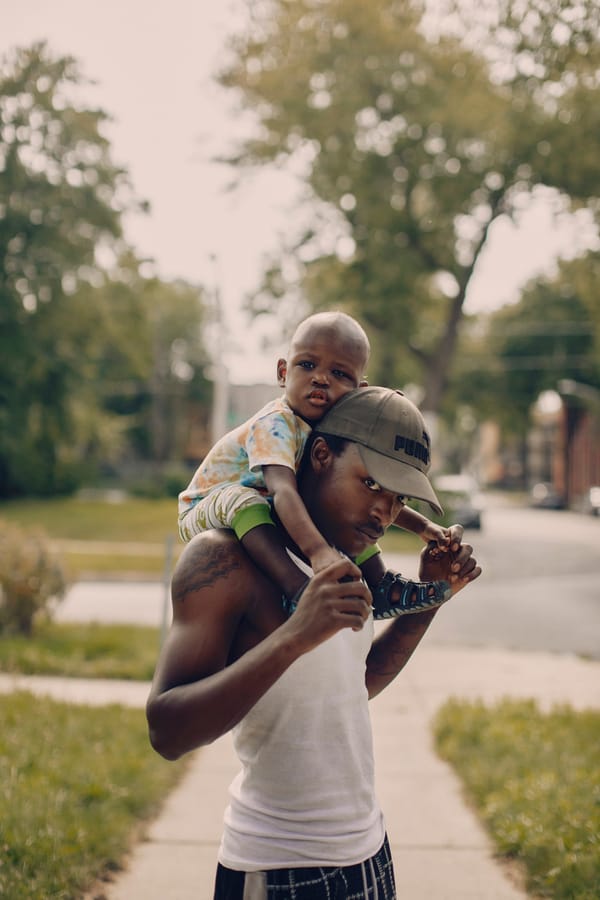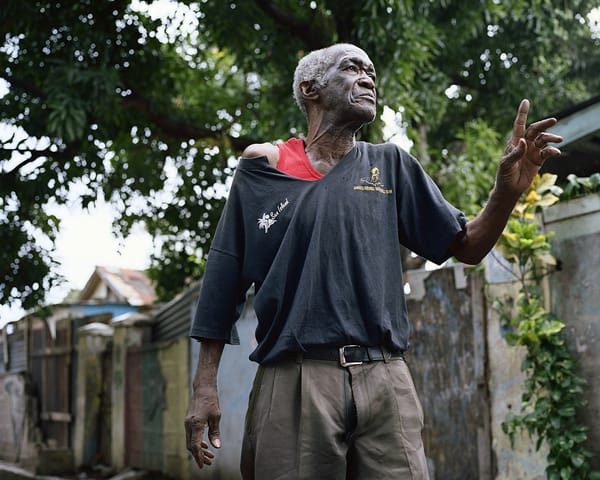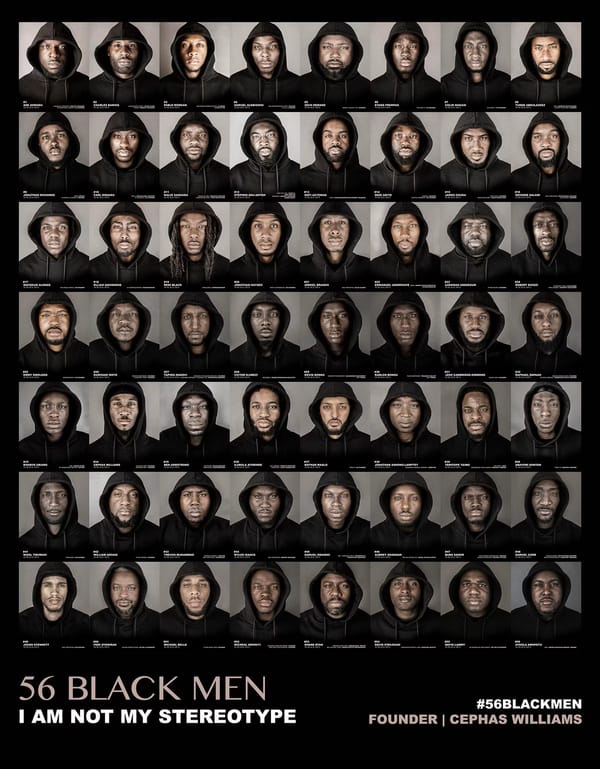Documenting the Ordinary

The Radical Power of Everyday Black Moments
Picture this: a group of cousins playing tag in the front yard. Your grandma humming in the kitchen as she stirs the pot. The folding chairs lined up in the back yard at a family cookout. These moments may feel small, even forgettable, but they are everything.
For generations, Black communities have lived vibrant, complex, joyful lives that often go unseen in the mainstream visual narrative. When our stories do appear, they are often framed through trauma, struggle or spectacle. But what about the everyday? The quiet. The playful. The soft.
Documenting the ordinary is not just nostalgic. It is radical. It affirms our existence on our own terms. It challenges erasure. It preserves the truth of who we are beyond headlines and hashtags.
And it starts with something as simple as making the photo.
1. Why Ordinary Moments Matter
In a world where Black life is frequently misunderstood or misrepresented, the act of documenting our everyday lives becomes a powerful form of resistance. Most media platforms do not show the full spectrum of our experiences. They rarely capture the nuance of our joy, the ease of our gatherings or the beauty of our daily rituals.
Photographing everyday Black moments — whether it’s a sibling rivalry, a shared meal or the after-church outfit photos — pushes back against narratives that flatten us. These images prove that we are not just surviving. We are living, laughing, growing, resting and loving.
These small moments become sacred because they show the fullness of our humanity. Over time, they become the images our children and grandchildren will turn to in search of who we were and how we lived.
2. Our Photo Albums Were Our First Archives
Before cloud storage and camera rolls, we had albums.
They were kept on coffee tables, tucked into drawers and pulled out at family gatherings. They were full of dated hairstyles, candid expressions and sometimes smudged fingerprints. But they told stories in ways that history books never could.
Our parents and grandparents, with film cameras and Polaroids, were our first archivists. They understood the importance of preserving memory. They did not wait for a professional photographer to do it. They documented baptisms, graduations, prom nights, reunions and Sunday mornings, everyday Black life.
These photo albums were not curated for an audience. They were made for us. They told the story of our people in our own language, with all the beauty and honesty we carry.
Now, with phones in our pockets and tools at our fingertips, we can continue that tradition and take it even further.
3. The Power of Documenting Joy, Love and Togetherness
There is something profoundly powerful about photographing joy. Black joy, in particular, is a defiant and transformative force. It is revolutionary in a world that often expects our pain but overlooks our peace.
Documenting moments of togetherness — cookouts, church services, late-night card games or dance battles at weddings — builds an archive of strength, connection and love. These are the images that our future selves will cherish. These are the moments that shape memory and define culture.
Photographers like Jamel Shabazz built entire careers capturing Black people in their element. Relaxed, stylish, joyful and fully present. His 1980s street portraits from New York are proof that everyday Black life is always worth remembering.
Whether you're a professional or a hobbyist, a teenager on a smartphone or a grandparent with a disposable camera, what matters most is that you care enough to capture what’s real.
4. Representation Without Performance
Too often, we feel like we need a reason to take a photo. A birthday, a graduation or a big milestone. But what if we documented ourselves just because we exist? What if we made space for the unfiltered, unposed and unedited beauty of our lives?
Ordinary moments do not need permission. They do not need to be aesthetic or perfect. When you take a photo of your uncle asleep on the couch after dinner, or your niece twirling in her princess dress, you are saying: this moment matters.
This is where everyday Black photography becomes deeply radical. It does not wait for spectacle. It does not perform for approval. It simply tells the truth.
Representation is not just about being visible. It is about being seen in full. Our ordinary is extraordinary, and it deserves to be documented as such.
5. Creating an Archive Is a Personal Act of Power
An archive does not have to be a museum or a gallery collection. Your archive can live in a shoebox, a Google Drive folder, a wall collage or a photo book you make each year.
Creating a family or personal archive is about intentional memory keeping. It is about protecting what might otherwise fade and celebrating what makes your story yours.
Here’s how you can start:
- Save and label your digital photos by year or by event.
- Print your favourite images. Don’t let your memories live only on screens.
- Scan old photographs from parents, grandparents or elders in the community.
- Ask questions about the images. Who is in this photo? Where was it taken? What’s the story behind it?
- Record audio or video to accompany certain pictures and preserve oral history.
- Share and preserve these archives with others in your family or community.
Think of it as a living legacy. One day, someone will look at the images you captured and feel more connected to who they are.
Start Your Archive, Tell Your Story
The world needs more images of Black life lived fully. Not just in protest. Not just in performance. But in peace. In love. In ordinary, magical, everyday ways.
You do not need to wait for a moment to become “important” to photograph it. It already is. The act of documenting Black life as it unfolds, unscripted and unapologetic, is an act of care, resistance and storytelling.
Your family archive matters. Your community archive matters. The joy, complexity and beauty in your daily life deserve to be preserved.
Start your own family archive today.
Whether it’s snapping photos at your next dinner, scanning old prints from your auntie’s photo box or recording your granddad’s stories, these everyday moments matter. Document them. Protect them. Pass them on.
The ordinary is worth remembering. And you are the one who can remember it best.
Share on social
If this story sparked something in you, share it. Our voices are powerful, and when we lift each other up, we all see a little clearer.
Contribute
At theBLKGZE, we don’t just reflect the world, we reshape it. We’re building an archive that centres Black vision and truth. We reclaim the frame. We archive what’s been silenced. We honour the everyday and the extraordinary in Black life.
We’re calling on Black photographers to contribute. Add your voice to the archive. Let's reshape the narrative with a truer picture of who we are and who we’ve always been.





